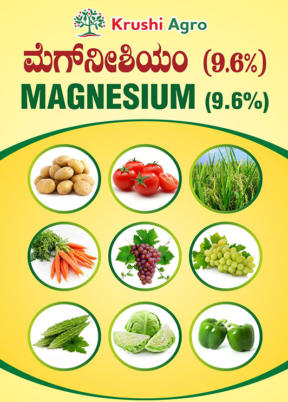
Magnesium is a very important secondary micronutrient, essentially needed for photosynthesis. Magnesium helps in activation of enzymes, energy transfer production of proteins and metabolism of carbohydrates. Light acidic soil and high rainfall areas usually have Magnesium deficiency.
MAGNESIUM (9.6%):
1.Improves plant resistance towards diseases.
2.Improves absorption of other nutrients from the soil.
3.Keeps plants healthy and greener.
4.Improves the quality and quantity of the yield.
1.Improves plant resistance towards diseases.
2.Improves absorption of other nutrients from the soil.
3.Keeps plants healthy and greener.
4.Improves the quality and quantity of the yield.
Magnesium deficiency is seen as Inter-Venial Chlorosis of older leaves in which veins remain green and the Inter-Venial area turns yellow. The leaves may remain small and leaves may drop prematurely.
Fruits and vegetables:
Loss of chlorophyll and chlorosis in older leaves, older leaves shows inter-venial pale colour within green margins followed patched and brown necrotic areas.
Flower Crops (Rose, Buttons etc.):
Yellowing of leaf inter-veins, small chloratic leaves with reduced growth.
Legumes:
Older leaves show marginal pale and alternate green yellow patches.
Grapes/Coffee:
Yellowing of leaf inter-veins.
Banana:
Increase of phenocolic and dicarbozylic amino acids and subsequent decrease in lysine content.
Tea:
Older leaves show chlorosis all along the midrib, the severity may lead to
widening of the discoloration of leaf veins band.
Cotton:
Purplish red discoloration of leaves, vein branding.
Mix thoroughly 3gms to 5gms per
Store in cool and and dry place.
1 kgs, 25 kgs, 50 kgs.


